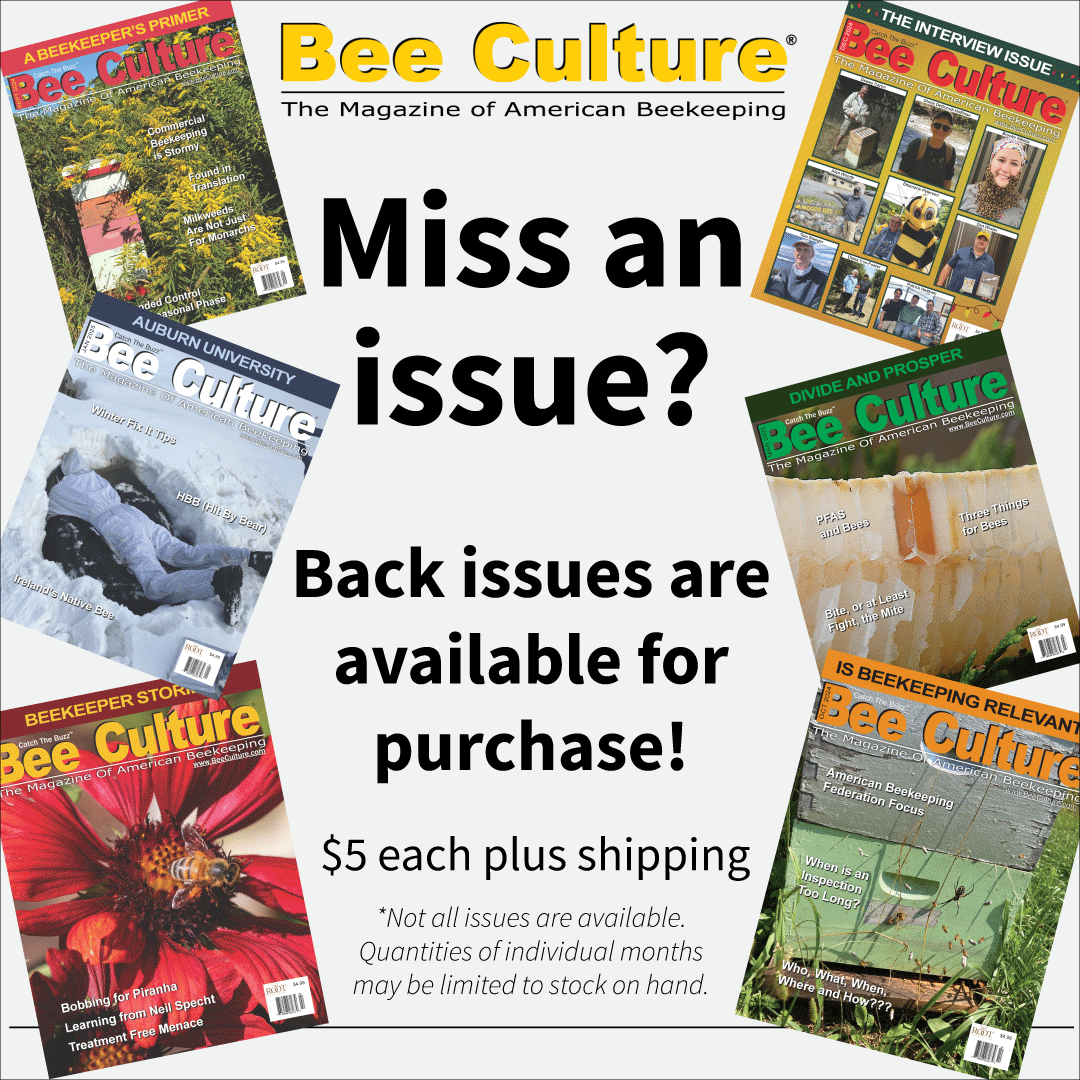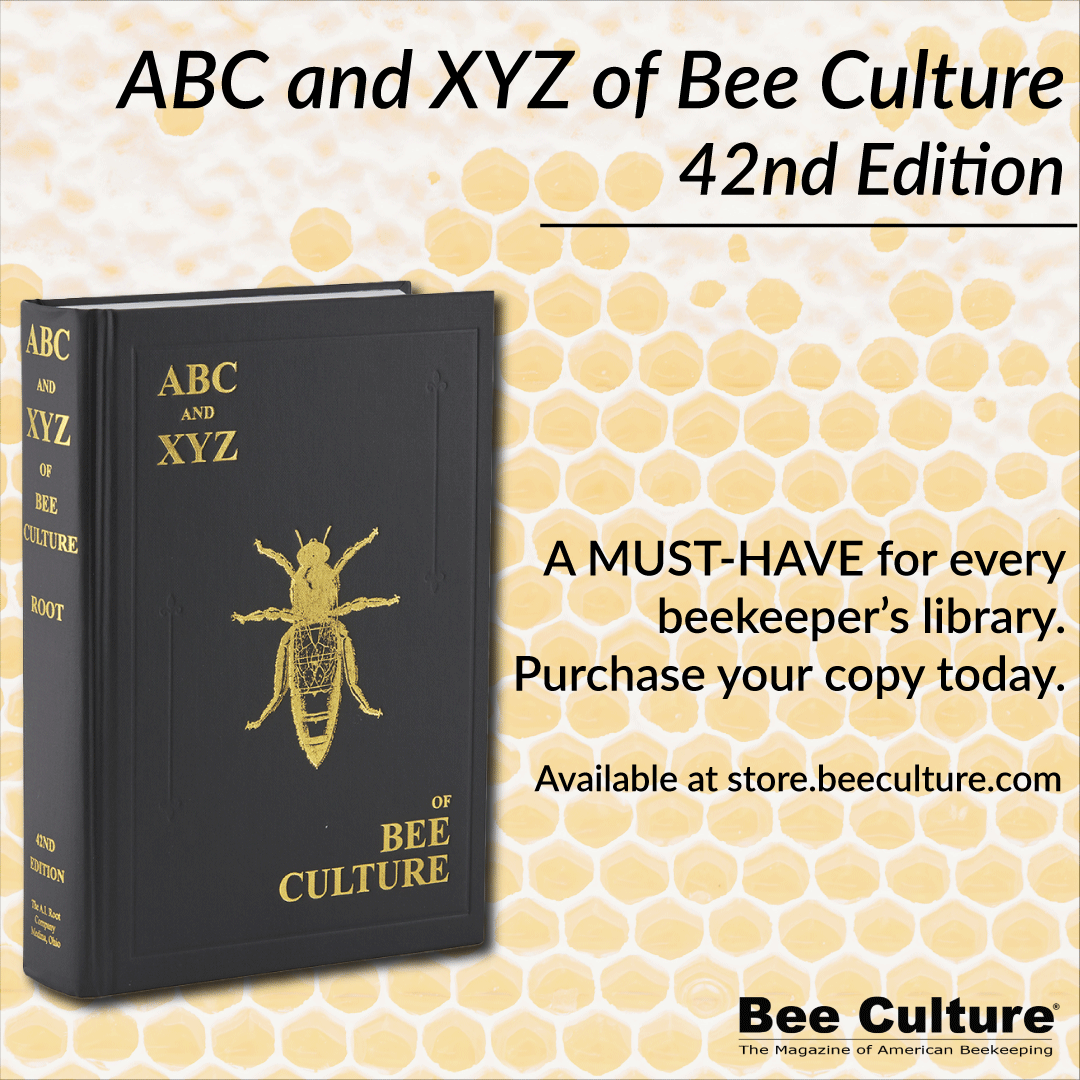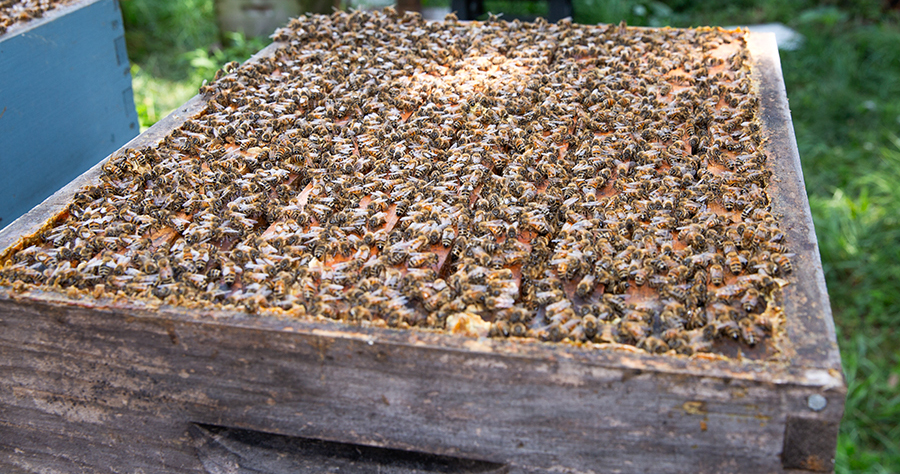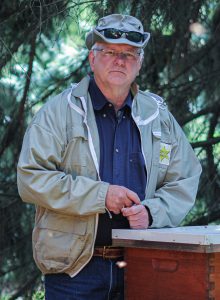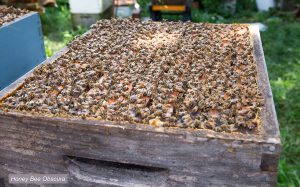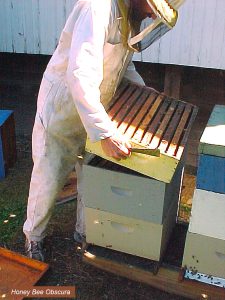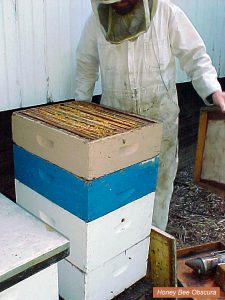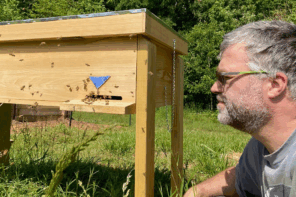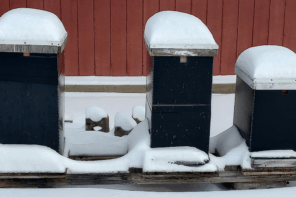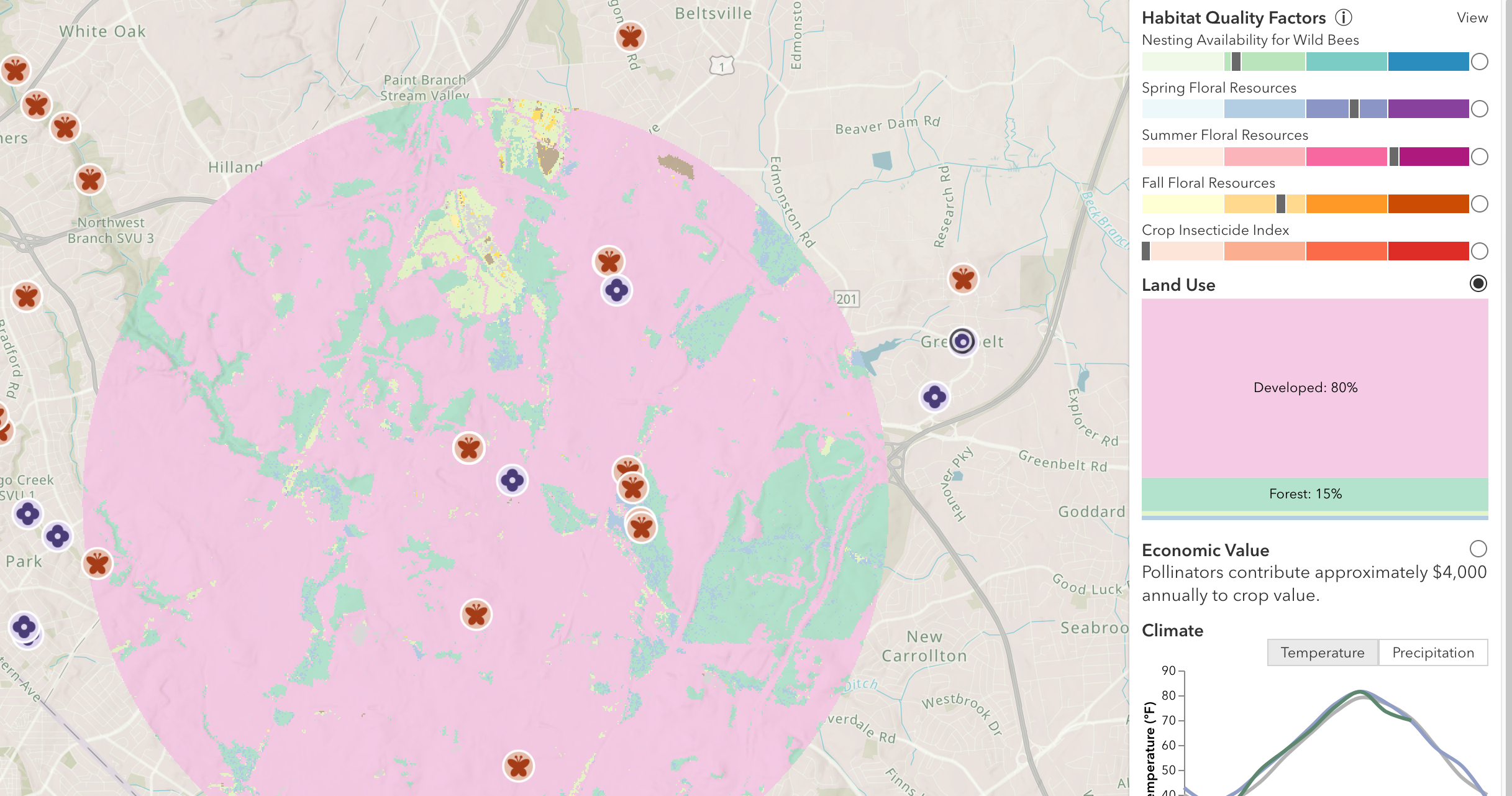Click Here if you listened. We’d love to know what you think. There is even a spot for feedback!
Read along below!
Making Summer Decisions That Affect Winter Management
Some Suggestions for Making Your Best Guesses Months in Advance
By: James E. Tew
Complaining about beekeeping
– an unlikely art form
Like so many beekeepers, through the years, I have become an expert at complaining. I can do it well and on short notice. I can complain about a variety of dissociated topics. It’s an acquired talent requiring time to perfect. “My bees all died.” “Varroa is killing us.” “Insecticides are insidious.” “We never see swarms anymore.” “Today’s queens are terrible.” “Our bees are just not what they once were.” Accomplished complaints fluidly roll off my tongue.
This past Spring (2024), I was completely geared for the usual bout of concerns and predictions. While my Winter kill was not too great, it was strange. Some of my strongest colonies last year died during the Winter with hundreds of pounds of honey on them. That alone predicted future bad karma for the 2024 season. I came through Winter with about a 35% Winter loss.
I have written about this in earlier Bee Culture articles. As Winter faded and Spring became established, I did the normal Spring preparations. I scraped bottom boards, removed entrance reducers, and rearranged food stores among the surviving colonies. I got the dead equipment out of the yards, and I did the spring tune-up on the mower. I wasn’t Johnny-on-the-spot, but I did okay.
Then I mentally prepared myself for the usual late season freeze that had killed so many bees and blossoms in recent early Spring seasons. Time passed. The late freeze never came. That’s strange. I already had my complaints and quotes prepared and edited. My bees built up nicely on the early pollen and nectar sources. I began to hear that bees in the Southeast were okay, but not great. Across the Midwest, some beekeepers were positive about the way their bees looked. After all we have been through in recent years, this somewhat upbeat attitude was an oddity.
The Spring flow started. I honed my negative attitude. “It will rain.” “Sure, there are blossoms everywhere, but they won’t produce.” “Varroa will take the bees all out.” We have been through this repeatedly. Why should I dare hope that this year would be any better? But the season was better – it was even noticeably better than previous years. In much of the country, everything came together and we got an old-fashioned nectar flow. I had put on the usual few supers per colony. This year, I should have put on many more. I should have brought some of the old, dusty equipment out of deep storage to net this entire crop. While I was completely prepared to complain, I was not completely prepared for a true nectar flow.
This “super” shortage was brought home in a personal way. I put on some supers and gave the remaining colonies a promise of supers to come. Then, for six days, I took a road trip to Michigan to visit family. As I rode south along the interstate, I knew I had screwed up. Everywhere, locust and tulip poplar were hanging nearly to the ground. The world was green and lush. You could just tell; this was a good year. I phoned home – desperately trying to find anyone to put on a few more supers, but all my friends have now become far too smart to get caught up in a request like that. What I had given the bees was what they were going to get. The return trip home was stark. Just six days later, all the white blossoms were nearly gone. The nectar window had begun to close. I now had populous, packed-out colonies. Then the swarming started.
Swarms, swarms everywhere.
In this regard, I was not the only one caught unaware. Everywhere, there were reports of swarms hanging about. And pleasantly, the caller usually started the call with, “I know bees are in short supply so I didn’t want to kill them…” At bee meetings, one beekeeper reported that he was being killed by swarming. Ninety-five percent of his 100 colonies swarmed. That seemed nearly impossible. We are accustomed to our season being killed by many things but being killed by bees being so strong that they split themselves was not something I was expecting. Other beekeepers had comments like, “I couldn’t work for the phone ringing.” “We have no more equipment so we had to stop going for swarms.” You see, as seasoned complainers, we can take a season that is so good that it becomes bad. Then we complain.
The 2024 season
– a middling year.
After all our beekeeping tribulations, it needs to be said – it is even difficult to say – but the 2024 season was a pretty good year. At Spring meetings, beekeeper spirits were high and significant numbers of new beekeepers were on hand. There was talk of crops and swarms and how to split big colonies. It seemed like beekeeping from years past. It felt warm. It felt good. Now what am I going to do with all this honey? These conversations came before the Autumn cry went out that too many bees were dying too early. Another CCD episode? What a difference a few months makes.
Removing the crop.
A good nectar flow is something like a Summer storm. For most of us, it is sudden and intense. Scrambling for extra beehive equipment and trying to get it on strong hives is common during this event. Then, the nectar storm begins to pass and finally, is gone. Quietness and sanity returns. Now all those supers that I put on just a few weeks ago need to come off – but this time, they are much heavier.
Now, here is the real reason for my article. After all the past Winter kills; after all the previous die-offs, after all the colony splits and after cleaning all that dead equipment; how much honey should I take? I don’t want to go through all that headache again. Are happy days here to stay or was the season of 2024 just a fluke? Should I go by the old recommendations or should I still suspect that my bees are recovering from a long, bad bout of bad luck?
Bee colony management
is not exact.
All bee colony management is a “best guess” process. How much honey to take and how much to leave is just another guess that we are required to make. There appears to be no reason to leave too much honey on the colony. I continue to be shocked to have taken hundreds of pounds of honey from colonies that died during previous Winters. Clearly, proper honey stores are only one of the requirements for successful colony wintering.
How much honey to remove
and how much to leave?
The following plans are just for me and are not intended to be a recommendation for others, but for the next few years, I am planning to winter in three deeps. In previous Bee Culture discussions, I considered going the other way and keeping my colonies smaller. Due to increased swarming rates, I need to work on that concept some more.
Even though I took hundreds of pounds of honey from dead colonies early last Spring, I still plan to leave more honey on than I did 15-20 years ago. This management strategy is a clear result of my occasional years of bad luck and complaining. So, right now, if my colonies have three full deeps of brood and honey and feel like dead weight when I heft the colony, I will take anything above that. That should be plenty.
Now, yet another change – I will not rush to extract all the crop I removed. Indeed, I will let some of it sit around until well into the upcoming Winter. Before you ask, this is not particularly good for the honey and the supers must be placed upon drip boards, but as were many of you, I was burned several years ago. I had colonies starving and I had nothing to give them but sugar syrup, which is a poor plan for truly subsidizing a struggling Winter colony. I wrote about the plan I have used for the past two years of supering only in deeps. Honey in these boxes are truly miserable to handle but I now have ready honey in deeps both on the bees. This honey is my “strategic honey reserve.” I will run the extractor and I will process some of the crop, but I will not be as greedy as I was just a few years ago. (I will need to monitor these full deeps for small hive beetles and wax moths. Nothing in beekeeping is particularly easy.)
An unintended side effect of this procedure is that I will have to clean the processing equipment more than once or I will have to let that sticky mess sit there for several months awaiting the extracting of the second part of the crop – should I decide to do so. Dare I write it? I am drifting toward exacting some honey in the Spring after it becomes clear that the bees will not need it for their Winter survival and Spring build-up. Is this drift efficient or sloppy? For those new to beekeeping, honey has traditionally been extracted in the Summer and Fall. But once you extract it from the comb, it is difficult to give it back to wintering bees. Spring extracting would throw off the entire traditional management scheme for seasonally manipulating bee colonies.
An aside.
While I was phone talking to a Bee Culture reader who had questions about his bees, he politely said, “In your articles, you don’t give specific recommendations.” “New beekeepers like me need somewhere from which to start.” He was correct. I don’t tend to make specific recommendations. Specific recommendations would require specific situations. So, in general, how much honey should you take and how much should you leave? I offer the following generalized honey stores comments.
Generalized wintering suggestions for late Summer/Autumn management of anaverage honey bee colony
- During September or October, do whatever it takes to have the general colony in two deeps with a gross weight of about 170 pounds. More weight is even better. When picked up from the back, the colony should feel dead heavy.
a. To achieve this colony weight
i. Leave abundant honey on the colony all season (best)
ii. Put honey (in combs) back on the bees as needed (good)
iii. Feed colony copiously until desired colony weight is obtained (poor)
iv. Wintering bees in two deeps is good and is the most common wintering sized colony. Wintering bees in three deeps may be best for most parts of the U.S., and wintering in a single deep would be the riskiest sized unit.
b. Gross colony weight (primarily honey) is not everything. The colony needs to be “balanced.”
i. So much as possible, the colony should be disease and pest free (best) or at least disease and pest reduced (good).
ii. The colony should have a productive queen supported by abundant worker populations.
iii. Pollen supplies should be stored by the bees in frames for future springtime use. (Not much the beekeeper can do about this point.)
iv. Food stores should be positioned above the brood nest and in constant contact with the nest.
v. Reduce entrances and provide for ventilation. Essentially, employ general winter preparation protocols. - We must accept beekeeper limitations. If statistics prevail, about 25% of your colonies will fall short in some of the categories listed above.
a. Do whatever is practical to address those shortages, but don’t “over-manage.”
b. Hope for a mild Winter and a bountiful Spring. (Luck – both good and bad – is an integral component of beehive management.)
Here’s the guess.
In order to meet the requirements for having a heavy colony in the late Fall, I am required to make “best guesses” when removing honey crops in the late Spring or early Summer. In a very real beekeeping way, important wintering decisions are made nearly six months prior to the cold season. On those beautiful, productive early Summer days, you must imagine that same colony, during the coldness of February. How much to leave and how much to take is always a calculated guess.
Robbing – a comment.
Robbing behavior deserves more than a paragraph, but just a mention is better than nothing. Logically removing honey after the flow is over is the norm, but it is also an excellent way to train bees to thieve from each other and even kill lesser colonies or deplete strong colonies. Robbing is annoying and frustrating, but oddly useful. If there is a nectar flow on, I will not see a single live bee in my storage barn. If I drive by the barn and see robbers trying to enter the doors, it is a clear indicator that the present flow is over. No scaled colonies, no pulling frames, no looking for bees on blossoms – I just look at my barn doors to determine if the bees are on a nectar flow. Checking my storage barn doors before moving to my bee yard gives me an idea of how much robbing behavior I can expect from my management activities.
An odd way to address and old topic.
To be sure you and I are on the same page, in summary, what I have been saying is: In recent Winters, I have had too many bees die – from starvation and otherwise. Abundant honey stores are part – but not all of the solution. As I did last year, I plan to leave my colonies heavier by leaving more honey on. Again, as I did last year, I plan to hold some of the honey supers I remove until early next year in order to have a honey reserve. If my bees don’t need it, I will extract it in the Spring of 2009. As will you, I will be forced to make wintering decisions while in the heat of Summer. As much as my energy, time, and funds allow, I will otherwise manage my colonies by employing current recommendations. Sorry, but I can’t be any more specific than that.
Dr. James E. Tew
Emeritus Faculty, Entomology
The Ohio State University
tewbee2@gmail.com
Host, Honey Bee
Obscura Podcast
www.honeybeeobscura.com



